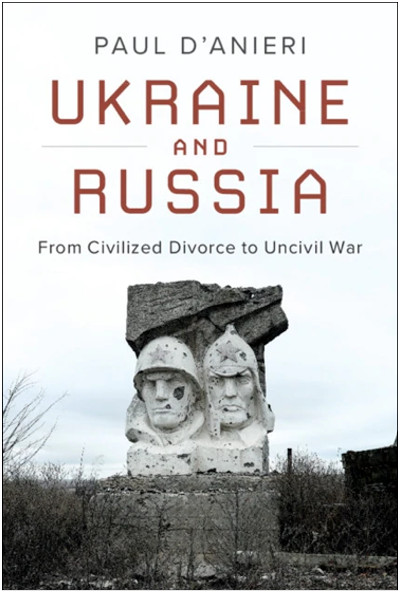In the picture
Cover of Paul D'Anieri's book, 'Ukraine and Russia. From Civilized Divorce to Uncivil War' (Cambridge: Cambridge University Press, 2019) 277 pages.
Judging by the large number of articles, summaries, programs of study and debates it is generating, it is safe to say that the Russo-Ukrainian war is currently the subject of most public interest, at least as far as the field of International Office is concerned. In this flurry of literature, however, there is a dearth of in-depth analysis to help discern and understand in all its complexity, beyond the immediate ones, the causes that have led to the escalation of the conflict to the level of open hostilities we see today.
Ukraine and Russia. From Civilized Divorce to Uncivil War' is an attempt to explain, not the war, but the conflict in which it is framed. Published in 2019, the book falls short of including the recent escalation of tensions that exploded into open war on 24 February 2022, and stops in 2014 in the immediate aftermath of Russia's seizure of control of the Crimean peninsula and subsequent invasion of Donetsk and Lugansk provinces. The entire work is, in fact, an attempt to explain the reasons behind these events and the dynamics that animate them.
This limitation, however, does not detract one iota from the explanatory value of the work because, at final, the war we are currently contemplating is but the latest episode in the assertive policy pursued by the Kremlin since Putin became president, and which has had an important turning point - as well as a precursor to the current war for those who were able to see it - in the Russian invasion of Georgia in 2008.
Methodologically, in his causal analysis, D'Anieri resorts to a chronological account of Ukraine's relations with Russia that, without historicist pretensions, draws on history to identify the keys that help to understand the events that followed the so-called Euromaidan revolution of 2014, the dynamics that animated this pro-Western movement, and the Russian reaction to it. The starting point for this is 1991, the year in which Ukraine gained its independence from the Russian Federation shortly after the collapse of the Soviet Union.
For the author, the underlying argument that explains Russia's action in 2014 - and thus the current armed confrontation - can be summed up in the realisation that the end of the Cold War triggered two forces constantly in tension: on the one hand, the democratisation process in Eastern Europe; on the other, Russia's insistence on retaining its 'great power' status and the dominance it has historically maintained over its immediate neighbourhood.
This circumstance, enough on its own to pit Russia against Ukraine, was fuelled by other dynamics, European in scope, that complicated the search for peaceful solutions to what appeared to be an irresolvable conflict. One of these was the existence of the "security dilemma"; a well-known problem of International Office whereby moves that one actor sees as necessary to reinforce its security are perceived by others as a threat, triggering a process of action-reaction that can eventually lead to war. Thus, for example, NATO's successive eastward enlargements after 1991, and Ukraine's attempts to join the Atlantic Alliance, were perceived by Russia as a threat to its security.
Another dynamic arose from the fact that the very idea of spreading democracy among the countries of the former Soviet orbit fuelled such a security dilemma in what the author calls a "fusion of democracy and geopolitics". As Russia moved away from liberal democracy while the rest of Europe embraced it, the continental divide between democratic and non-democratic states became increasingly clear. Such a division could only be avoided if Russia abandoned its claim to great power status and consolidated itself as a democratic state. Neither of these changes took place, and Europe moved towards division.
One of the book's weaknesses is perhaps the lack of references to the root causes of the conflict, which need to be known and understood in all their variety and complexity if a lasting resolution of the conflict is to be achieved. While the author makes a B work in identifying what we might call the "intermediate" causes of the conflict - those that begin in 1991 - he seems to neglect to delve deeper into the remote causes that feed it, among which we can identify some of a historical, cultural or geopolitical nature. Although there is obviously no lack of references to them, they are not examined in detail, which leaves the analysis somewhat incomplete.
Ukraine and Russia' offers a comprehensive - and at the same time engaging - account of the evolution of the confrontation between Ukraine and Russia that has led to the current war. Undoubtedly, degree scroll is a must-read for anyone wishing to delve deeper into its root causes.

